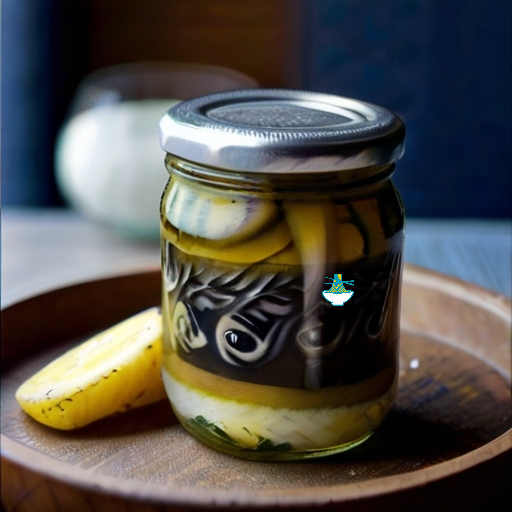Embark on a gastronomic journey to the enchanting Faroe Islands with "Sild og Kal." This immersive culinary experience offers a tantalizing exploration of Faroese cuisine, spotlighting two iconic ingredients: herring (sild) and lamb (kal). Delve into the rich culinary heritage of these remote North Atlantic islands as you savor traditional dishes crafted from the freshest locally sourced ingredients.
Indulge in the savory flavors of pickled herring, a beloved staple in Faroese cuisine, prepared with time-honored recipes passed down through generations. Then, feast on succulent lamb dishes, showcasing the tender meat of Faroese sheep raised amidst breathtaking landscapes.
Join us on a culinary adventure that celebrates the essence of Faroese culture, where the bounty of the sea and the rugged beauty of the land converge to create unforgettable dining experiences. "Sild og Kal" invites you to taste the essence of the Faroe Islands, where every dish tells a story of tradition, innovation, and the enduring spirit of the North Atlantic.
Ingredients:
- 4-6 herring fillets (fresh or pickled)
- 4-6 medium-sized potatoes
- 1 large onion, thinly sliced
- 1 cup white vinegar
- 1/2 cup water
- 3 tablespoons sugar
- 1 tablespoon salt
- 1 teaspoon whole black peppercorns
- 2 bay leaves
- Fresh dill, chopped (optional, for garnish)
Instructions:
Prepare the Herring:If using fresh herring, clean and fillet them. If using pickled herring, drain and rinse them under cold water to remove excess brine. Pat dry with paper towels.
Boil the Potatoes:Scrub the potatoes clean and place them in a pot of salted water. Bring to a boil over medium-high heat and cook until tender when pierced with a fork, about 15-20 minutes. Drain and set aside to cool slightly.
Prepare the Pickling Solution:In a small saucepan, combine the white vinegar, water, sugar, salt, whole black peppercorns, and bay leaves. Bring the mixture to a simmer over medium heat, stirring until the sugar and salt dissolve completely. Remove from heat and let the pickling solution cool to room temperature.
Assemble the Dish:
1-Once the potatoes are cool enough to handle, slice them into rounds or quarters, depending on your preference.
2-Arrange the sliced potatoes and thinly sliced onions on a serving platter.
3-Place the herring fillets on top of the potatoes and onions, arranging them evenly across the platter.
Pour the Pickling Solution:Once the pickling solution has cooled, pour it over the herring, potatoes, and onions, ensuring they are fully submerged. If needed, you can add more vinegar and water in equal parts to cover everything.
Marinate:Cover the platter with plastic wrap or a lid and refrigerate for at least 4-6 hours, or preferably overnight, to allow the flavors to meld and the herring to fully absorb the pickling marinade.
Serve:Before serving, garnish with chopped fresh dill, if desired. Serve the pickled herring, potatoes, and onions chilled as a delightful appetizer or part of a traditional Faroese meal.
Enjoy the delightful flavors of Faroese cuisine with this classic dish of Sild og Kalt!
Nutritional Values:
Herring Fillets (per 100g, raw):
- Calories: 203 kcal
- Protein: 18.8g
- Fat: 13.9g
- Carbohydrates: 0g
- Fiber: 0g
- Sugars: 0g
- Sodium: 60mg
benefits
- Rich in Omega-3 fatty acids, which are beneficial for heart health.
- Excellent source of high-quality protein.
- Provides essential vitamins and minerals such as vitamin D, vitamin B12, and selenium.
Potatoes (per 100g, boiled without salt):
- Calories: 87 kcal
- Protein: 1.9g
- Fat: 0.1g
- Carbohydrates: 20.1g
- Fiber: 1.8g
- Sugars: 0.8g
- Sodium: 6mg
benefits
- Good source of complex carbohydrates, providing sustained energy.
- High in fiber, aiding digestion and promoting gut health.
- Rich in vitamin C, potassium, and other nutrients important for overall health and immune function.
Onions (per 100g, raw):
- Calories: 40 kcal
- Protein: 1.1g
- Fat: 0.1g
- Carbohydrates: 9.3g
- Fiber: 1.7g
- Sugars: 4.7g
- Sodium: 4mg
benefits
Contains antioxidants like quercetin, which may help reduce inflammation and lower the risk of chronic diseases.
Provides prebiotic fibers that support a healthy gut microbiome.
Rich in vitamins C and B6, as well as folate and other minerals.
White Vinegar (per 100g):
- Calories: 18 kcal
- Protein: 0g
- Fat: 0g
- Carbohydrates: 0.9g
- Fiber: 0g
- Sugars: 0.9g
- Sodium: 5mg
benefits
- Helps to balance blood sugar levels when consumed with meals.
- Contains acetic acid, which may aid in weight management by promoting feelings of fullness and reducing appetite.
- May have antimicrobial properties, helping to inhibit the growth of harmful bacteria.
Sugar (per 100g):
- Calories: 387 kcal
- Protein: 0g
- Fat: 0g
- Carbohydrates: 100g
- Fiber: 0g
- Sugars: 100g
- Sodium: 1mg
benefits
- Provides a quick source of energy, particularly useful during physical activity.
- Adds sweetness and flavor to dishes.
- Can be used in baking to enhance texture and help with browning.
Salt (per 100g):
- Calories: 0 kcal
- Protein: 0g
- Fat: 0g
- Carbohydrates: 0g
- Fiber: 0g
- Sugars: 0g
- Sodium: 38758mg
benefits
- Essential for maintaining proper fluid balance and nerve function in the body.
- Enhances the flavor of foods and helps to balance other flavors in a dish.
- Contains important minerals like sodium and chloride, which are necessary for overall health in appropriate amounts.
Please note that these values are approximate and can vary based on factors such as cooking methods and specific brands of ingredients used. Additionally, the nutritional values for the pickling solution may vary depending on the ratio of ingredients used in the recipe.


Comments